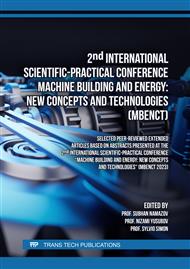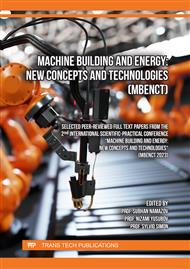p.97
p.103
p.111
p.117
p.125
p.131
p.137
p.147
p.153
Research on Ratio Regulation Gear Differential Closed by a Continuously Variable Transmission (CVT)
Abstract:
Over the past two decades, numerous research efforts have been aimed at developing efficient transmissions, in particular automotive ones, which can significantly reduce energy consumption and improve the dynamic properties of the car. The driving performance of a vehicle is one of the most important qualities that ensures comfortable movement of the passenger, which also affects traffic safety. One way to achieve this goal is to use transmissions that provide continuously variable control. gear ratio. The Continuously Variable Transmission (CVT) provides continuous shifting, changing the ratio between the input and output shafts within the desired range, which consequently improves fuel economy and vehicle performance by better matching engine operating conditions to changing road conditions. This article discusses the possibility of using composite transmissions - gear differential mechanisms closed by (CVT). Various schemes of composite transmissions are given. The conditions under which the transmission ratio of the entire transmission must be changed by changing the transmission ratio (CVT) included in the combined transmission have been studied.
Info:
Periodical:
Pages:
125-130
Citation:
Online since:
April 2024
Authors:
Keywords:
Price:
Сopyright:
© 2024 Trans Tech Publications Ltd. All Rights Reserved
Share:
Citation:



